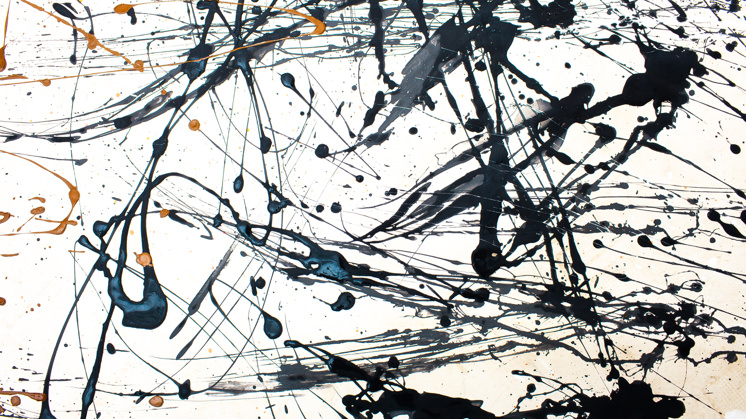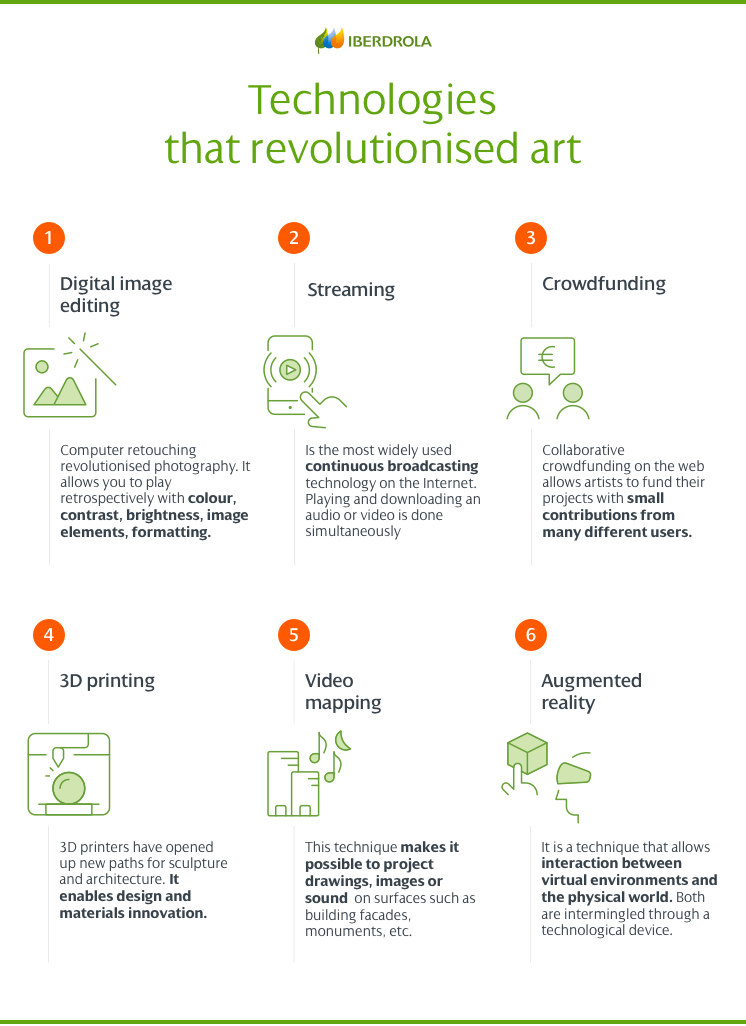BLOCKCHAIN APPLICATIONS IN THE ART INDUSTRY
Blockchain will revolutionize the art industry
Blockchain applications have reached the art world. This technology, which bitcoin and other virtual currencies are based on, can already be applied to the creative industries to guard against many of the pitfalls that authors face today. Some of its main advantages are that it guarantees, among other aspects, copyright, transparency in sales and the provenance of the works.



HOW DOES BLOCKCHAIN HELP THE ART SECTOR?
The applications of blockchain are well known in the financial sector. This technology, which was born in 2008, enables secure internet transactions such as cryptocurrency payments and smart contracts. An analysis of the blockchain market in 2021 by Markets and Markets reveals that the sector could grow from a value of $4.9 billion (in 2021) to $67.4 billion in 2026.
Blockchain applications in music, cinema, theatre and the publishing industry could lead to revolutionary improvements in the not too distant future. NFTs (non fungible tokens), which have already revolutionised the traditional art market, started to be talked about in 2020. An NFT is a blockchain-enabled digital contract that guarantees the ownership and authenticity of a work of art.
The pandemic has triggered a systemic change in the art market and the internet has become the main sales channel in the world, according to the Online Art Trade Report 2021, elaborated by Hiscox. In particular, Art Basel and UBS highlight the growth of the NFTs market, whose figures doubled in 2021 to reach $2.6 billion (around €2 billion).
These are the main advantages of the application of blockchain in art:
REDUCTION OF INTERMEDIARIES
The number of mediators in sales transactions makes it very difficult for authors to reach their target audience and makes their work more expensive.
Initiatives based on blockchain applications and smart contracts will give artists back control of their works. In this way, they will be able to show or sell their work to potential buyers in a secure cyber environment and at profitable prices.
Maecenas Fine Art, a pioneer of art auctions via blockchain, uses this technology. On this platform, sellers make an inventory of their works and investors can buy them in fragments, lowering the cost of the operation. There are no intermediaries, something that is only made possible with the transparency, traceability and speed of blockchain.
GUARANTEED INTELLECTUAL PROPERTY
Blockchain can also be applied to innovations in the area of copyright. Thanks to blockchain, we can permanently store the intellectual property of a work in the cloud and manage it wherever and whenever we want.
This improves transparency and guarantees copyright at a delicate time for Internet art: 132 billion visits to pirate sites were recorded in the first nine months of 2021, 16% more than in the same period in 2020, according to a study by London-based online piracy firm Muso (latest available data).
Kodak and Baidu are two companies that have blockchain initiatives to protect and manage the intellectual property of photographs circulating on the web. Kodak uses a unique cryptocurrency to facilitate the purchase of the images on its platform; while Baidu uses an app on which the copyright information is written in blockchain.
IMPROVED TRACEABILITY OF CREATIVE CONTENT
Another application of blockchain is to improve the traceability of artworks. As it is a complex cryptographic technology, we can track the complete journey of a painting, a sculpture or any valuable object, from its creation to its final destination.
Blockchain stores information on the records, sales, studies, analyses, certifications, appraisals, etc., relating to an artwork. This reduces illicit trafficking in cultural property and solves the problem of counterfeiting.
Advantages of blockchain in the arts
In addition to cutting out intermediaries, securing copyrights and makint it easier to trace artwork, blockchain has these other benefits:

Breaking the industry monopoly
Blockchain empowers small entrepreneurial artists to bring an end to the dominance of large auction houses and art galleries.

Mantaining the anonymity of the collector
Blockchain provides public data about artworks without revealing the identity of the collectors.

Connecting artists with each other
Blockchain will create an interconnected online marketplace where creators will be able to buy cheaper materials and tools.

Certifying the collector's property
In the event of theft, loss or destruction of an artwork and its legal documents, the owners may be able to prove their ownership rights to insurance companies.

Speeding up the creation of digital art
Blockchain facilitates the workd of artists who rely on computer algorithms or digital elements to create their artwork.

Certifying the quality of the files
Blockchain certifies the production of original or high quality images in works that are shown on a screen.

Operating with cryptocurrencies
Buying and selling are speeded up and bank commissions on transfers disappear.

Digitising galleries
Physical spaces will lose prominence in favour of a decentralised and autonomous online market that will operate through intelligent contacts.
THE SUCCESS OF THE OPEN MUSIC INITIATIVE
The leap of music to the Internet caused a radical shift in this industry. From CD players we went to continuous playback (streaming) and the services which dominate music content globally such as Spotify —with 433 million active users in the second quarter of 2022, according to the company itself— and YouTube —where more than 5 billion videos are watched per day in 2022, according to MerchDope—.
With this shift, musicians asked for a solution that would allow them to own their creations and receive a fairer percentage for them. Among the different blockchain applications, platforms have emerged such as the Open Music Initiative, a non-profit initiative which gives the authors back control of their work.
Led by the Berklee College of Music and the Massachusetts Institute of Technology (MIT), this initiative is capable of tracking the uses of a particular piece of music, the number of plays and where it is played. It can also draw up smart contracts that let artists sell the rights to their own composition with total security and independence.
Blockchain services have appeared in the ticket sales market to reduce fraud and speculation. Smart tickets allow unique registers of authorised buyers to be created so that those responsible for an event can keep track and block resale tickets.






